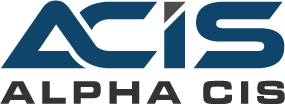One Simple Step That Could Prevent a Devastating Data Breach
Microsoft has recently announced a significant change in their security protocols—soon, all Azure sign-ins will require multi-factor authentication (MFA) to enhance user protection. While this update specifically affects users of Microsoft Azure, their cloud computing platform, it’s a signal that all businesses, whether they use Azure or not, should take note. Why? Because MFA is one of the most straightforward and highly effective ways to safeguard your digital assets against cyber threats.
What is Multi-Factor Authentication?
Think of multi-factor authentication (MFA) like installing a high-tech security system at the entrance of your business. Traditionally, most people log into their accounts with just a username and password. Unfortunately, passwords aren’t as secure as they once were. Cybercriminals have become experts at guessing, cracking, or stealing passwords through various methods like phishing attacks, brute-force attempts, and even buying them off the dark web.
This is where MFA comes in. MFA requires users to verify their identity twice before they can access their accounts—like having two locks on the same door. After entering a password, the user is asked to provide a second form of verification, such as a unique code sent to their mobile phone, a fingerprint scan, or approval through an authenticator app like Microsoft Authenticator. This extra layer of security is crucial because even if a hacker manages to steal your password, they would still need the second form of verification to gain access to your account.
Why is MFA Important for Your Business?
At first glance, adding another step to your sign-in process may seem like a minor inconvenience. You might wonder, “Is this really necessary?” The answer is a resounding yes. In today’s digital landscape, cybercriminals are continuously evolving their techniques, and password-based security is no longer enough to fend off attacks. A single data breach could result in devastating financial losses, legal liabilities, and irreversible damage to your business’s reputation.
The small effort it takes to use MFA could prevent these catastrophic outcomes. Imagine the havoc an intruder could wreak if they gained access to sensitive customer information, proprietary business data, or even financial records. Implementing MFA is like locking the digital front door, and it is one of the most effective ways to mitigate the risk of unauthorized access.
The Different Types of MFA
One of the advantages of MFA is that it offers multiple options, so businesses can choose the method that works best for them. Here are the most common types of MFA:
- One-Time Passcode (OTP): One of the most widely used forms of MFA involves sending a one-time code to your mobile device via text message or email. The code is entered after your password to confirm your identity.
- Authenticator Apps: Mobile apps like Microsoft Authenticator or Google Authenticator generate time-sensitive codes that you input after entering your password. These apps add an extra layer of convenience since they can work even if your phone doesn’t have network access.
- Push Notifications: Some platforms send a push notification to your phone, asking you to approve or deny the login attempt with a simple tap. This is convenient and fast, especially for users who are frequently on the go.
- Biometrics: Fingerprints, facial recognition, and even voice recognition are becoming more common as forms of MFA. Since these are unique to each individual, they provide a very high level of security.
- Physical Security Keys: For those seeking the most robust protection, physical security keys are available. These devices are typically small USB keys that you plug into your computer to verify your identity during the login process.
Why Microsoft’s Move is a Big Deal
Microsoft’s decision to enforce MFA for all Azure sign-ins marks a growing trend in cybersecurity, where enhanced authentication is becoming the new standard. Azure is one of the largest cloud computing platforms globally, and this change highlights the importance of security in cloud environments.
However, it’s important to note that MFA isn’t just a tool for large enterprises or Azure users. It’s becoming a business security basic, and companies of all sizes and industries should consider implementing it across their systems and networks. Whether you use cloud services, manage customer data, or store sensitive internal documents, MFA can significantly reduce the risk of a security breach.
How Can You Implement MFA?
Setting up MFA is easier than you might think, and the benefits far outweigh any initial setup effort. Depending on the tools and platforms your business uses, MFA can often be enabled in just a few clicks.
If your organization isn’t sure where to start, or if you need assistance in setting up and managing MFA for your employees, we can help. Our team specializes in helping businesses integrate strong security measures seamlessly into their workflows. Whether you’re using Microsoft Azure or another platform, we can ensure your business’s digital assets are protected with MFA, without disrupting daily operations.
Conclusion: A Small Step for Big Security
In an era where cyberattacks are growing increasingly sophisticated, MFA provides a simple yet powerful defense against unauthorized access. Microsoft’s move to require MFA for Azure sign-ins is just the tip of the iceberg—this security measure should be implemented across all business platforms to protect valuable data. If your business is not yet using the MFA, make sure you contact your Managed IT Services Provider (MSP) or your IT vendor in order to ensure that your business is fully protected.
Don’t wait for a cyber breach to realize the importance of strong security. Take proactive steps now to safeguard your business. Contact us today by giving us a call at (678) 619-1218 or booking an appointment here for a quick 15 min chat. to learn more about setting up MFA for your organization and how we can help make security simple and effective.

Dmitriy Teplinskiy
I have worked in the IT industry for 15+ years. During this time I have consulted clients in accounting and finance, manufacturing, automotive and boating, retail and everything in between. My background is in Networking and Cybersecurity



